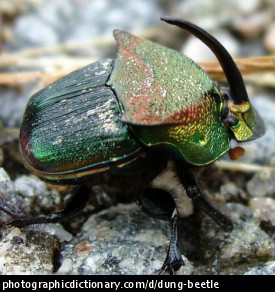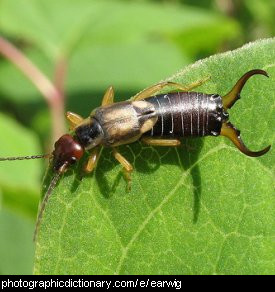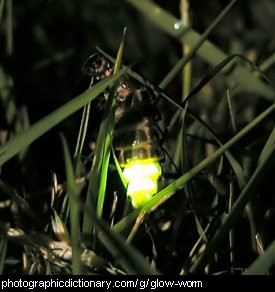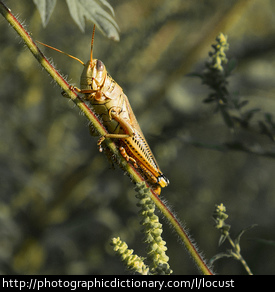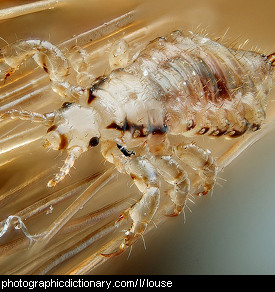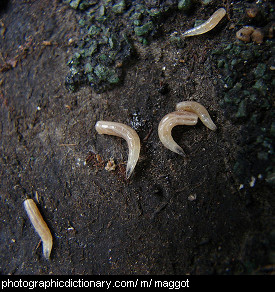Dis forDung beetle
Earwigs are a very common insect found all over the world. They eat ripe fruit, trash, other insects and the young shoots of plants.
They get their name because a long time ago people beleived that earwigs crawled into people's brains through their ears to lay their eggs. Earwigs do like hiding in warm, dark, damp places so it is possible they will hide in people's ears if they have the chance.
Fis forFly (insect)
Scientific name: order: diptera
Glow-worm is a name given to any insect on the ground that glows, and you can see them at night. Some do look like worms, most are kinds of caterpillar or beetle. Firefly is also a word for the same insects, but glow worm is usually used for glowing insects on the ground, and firefly for glowing insects that fly.
Locusts are a kind of grasshopper that form into huge swarms. When they are swarming in such large numbers they can strip crops and gardens completely.
Scientific name: family: culicidae
A mosquito is a common insect that flies. Mosquitoes have a very sharp, hollow tongue that they use to stick through your skin and drink your blood. Some mosquitoes carry very dangerous diseases which can make you very sick. Mosquitoes lay their eggs in water, and the baby mosquitoes live in the water until they turn into the adults. It is a good idea to make sure you have no uncovered water in your backyard for mosquitoes to lay eggs in.
Scientific name: order: lepidoptera
Moths are very similar to butterflies and have a similar lifecycle. They changes completely as they go through their life. A moth starts as an egg, which hatches into a caterpillar or grub. The caterpillar then spins a cocoon and turns into the adult moth. Caterpillars spend all of their time eating. Some moth caterpillars eat leaves, others eat leaf litter on the ground, and others will eat holes through the trunks of trees.
Moths are generally not as brightly coloured as butterflies, and are more likely to be seen at night than during the day. Moths are attracted to light.



